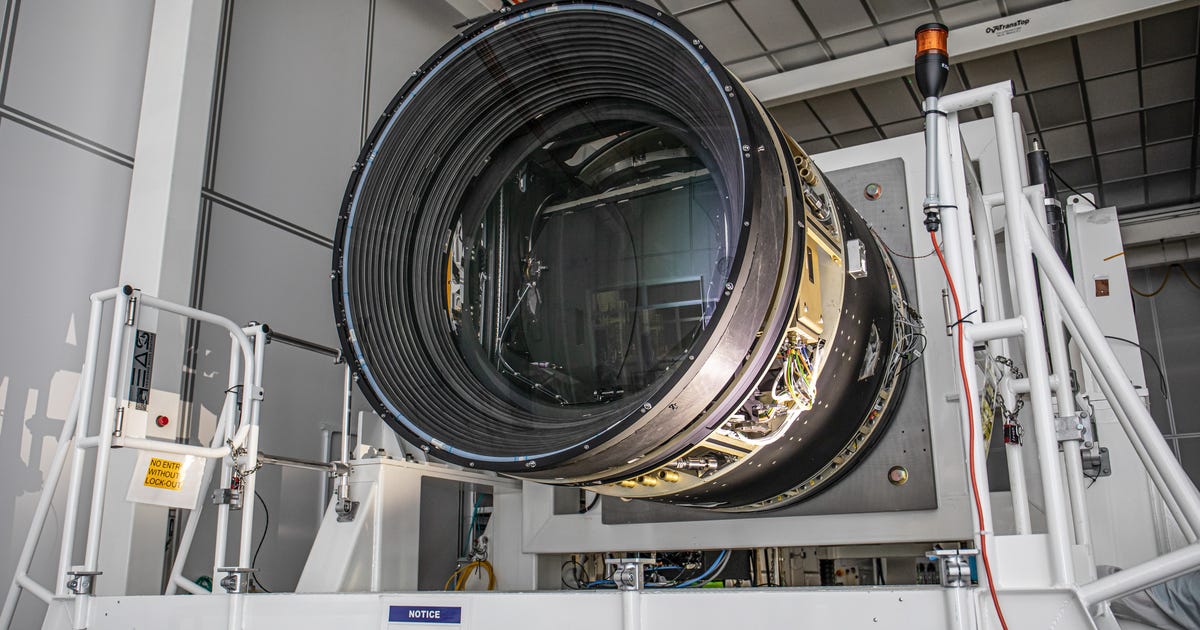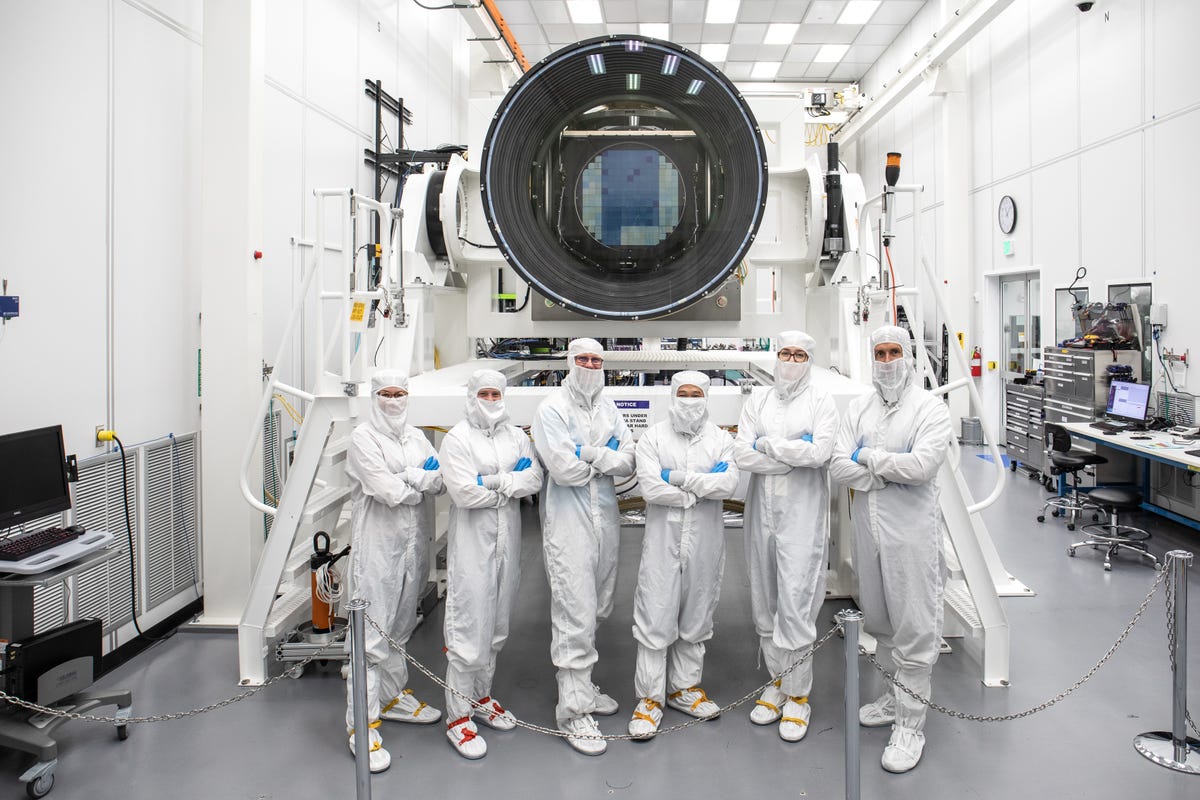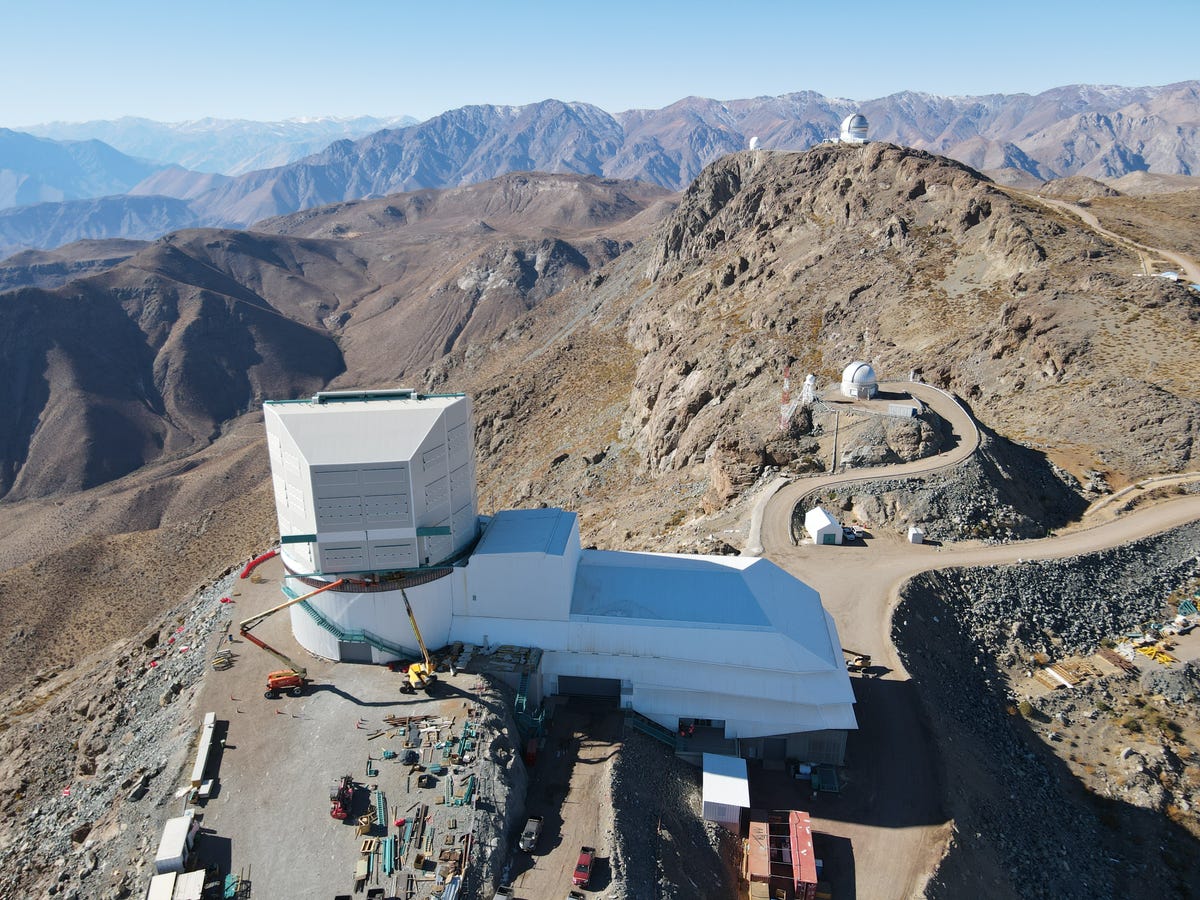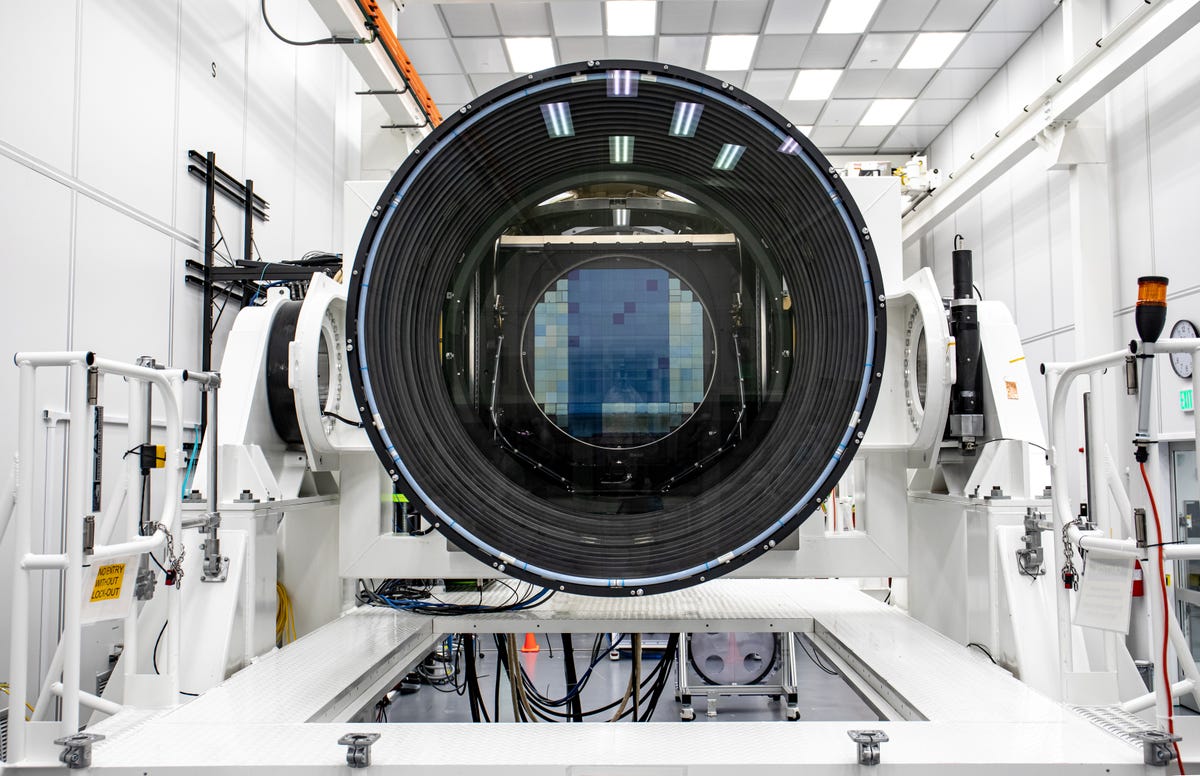
Scientists in Northern California are putting finishing touches on the world’s largest digital camera. They recently took off the lens cap and invited CNET to take a rare look inside.
Engineers at the SLAC National Accelerator Laboratory have spent the last seven years building the Legacy Survey of Space and Time, or LSST, camera. The camera is the size of a small car and weighs about three tons, and at five feet across, the lens holds a Guinness World Record. Watch the embedded video to see our visit inside the clean room with the camera.

Scientists pose in a clean room with the LSST camera at the SLAC National Accelerator Laboratory in Menlo Park, California.
Jacqueline Ramseyer Orrell/SLAC National Accelerator Laboratory
The 3,200 megapixel camera, powerful enough to spot a golf ball 15 miles away, will be the heart of a new telescope at the Vera C. Rubin Observatory in the mountains of Chile, where it’ll spend a decade mapping the entire southern sky. Scientists predict the LSST camera will help them discover 17 billion new stars, as well as 6 million new objects in our own solar system.
Where the recently launched James Webb telescope takes a deep, narrow look into space, the LSST camera will take a much wider view. Once in operation it’ll image a piece of sky seven times the width of the full moon every 15 seconds, creating an entire panorama of the sky every night. Scientists all over the world are getting starry-eyed thinking about all those images. “When we see a new phenomena, within 60 seconds of the shutter closing, we are going to be able to send alerts to anybody who is curious.” said Travis Lange, the lead mechanical engineer on the camera.

The Vera C. Rubin Observatory under construction on Cerro Pachón in Chile.
LSST
Once the 10 year project is complete, the LSST camera will have created a 3D movie of the entire southern sky. “(It) will enable us to see things on timescales that haven’t been accessible before,” said Risa Wechsler, a professor of Physics at Stanford University.
“It enables us to ask really big questions. What is the universe made of? What is the nature of dark matter and dark energy?”

A direct view inside the LSST camera.
Jacqueline Ramseyer Orrell/SLAC National Accelerator Laboratory
Scientists at SLAC will spend the next few months running final tests on the camera. In May 2023 they plan to pack it up and put it on a chartered Boeing 747 for the flight to Santiago, Chile. It’ll then be placed on a train to reach the observatory on top of the mountain Cerro Pachón.
